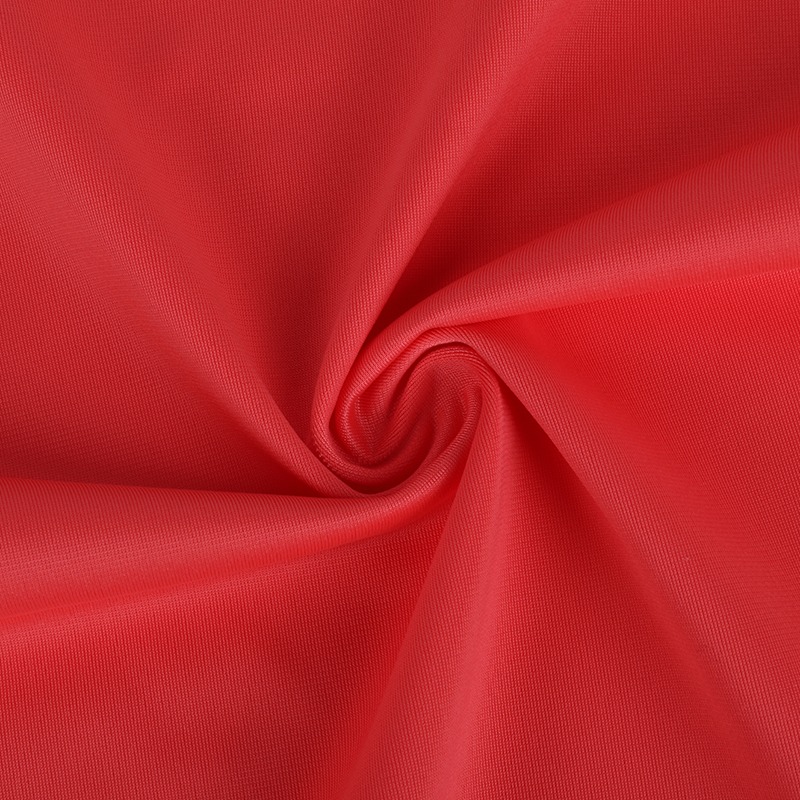
Breathable and waterproof, can outdoor sports fabrics really achieve a perfect balance?
1. Breathable performance: the invisible guardian of outdoor sports
The reason why breathable performance has become a key indicator of outdoor sports fabrics is that it is directly related to the comfort and sports performance of the wearer. In high-intensity activities such as outdoor adventures, hiking, and mountaineering, the body will produce a lot of sweat. If this sweat is retained inside the fabric, it will not only make people feel stuffy and uncomfortable, but may also cause skin problems such as eczema and prickly heat. More seriously, the accumulation of sweat will reduce the warmth retention of the fabric, increase the risk of hypothermia, and pose a threat to the safety of athletes.
Therefore, an outdoor sports fabric with excellent breathable performance is like an invisible guardian of the wearer. It can quickly evaporate sweat and keep the body dry, thereby effectively avoiding the occurrence of the above problems. This dry and comfortable state can not only improve the comfort of athletes, but also allow them to focus more on the sport itself and perform at their best.
2. Innovative technology: the secret to improving breathability
In order to achieve the excellent breathability of outdoor sports fabrics, fabric manufacturers continue to explore and innovate, and adopt a variety of advanced technologies. These technologies not only improve the breathability of fabrics, but also ensure their performance in other properties such as waterproofness and wear resistance.
Among them, optimizing fabric structure is a common and effective method. By increasing the number of micropores and adjusting the size of micropores, fabric manufacturers can significantly improve the air circulation of fabrics. These micropores are like small vents that allow air to flow freely and take away sweat and moisture. At the same time, the design of the micropores has been carefully calculated to ensure that the waterproof performance of the fabric is not sacrificed while maintaining breathability.
In addition to optimizing fabric structure, the use of special fiber materials is also an important means to improve breathability. Some natural fibers, such as cotton and linen, have good moisture absorption and perspiration wicking properties. Modern technology has further improved the performance of these fibers. For example, through special treatment processes, the fiber surface can be made smoother, reducing the adhesion of sweat on the fiber, thereby accelerating the evaporation of sweat. In addition, some synthetic fibers are also given the function of moisture absorption and perspiration wicking. They achieve excellent breathability by imitating the structure of natural fibers.
3. Perfect balance between breathability and waterproofness
For outdoor sports fabrics, breathability and waterproofness are often a contradiction. However, with the continuous advancement of technology, fabric manufacturers have found a way to find a perfect balance between the two.
On the one hand, by optimizing the fabric structure and using special fiber materials, fabric manufacturers can significantly improve the breathability of fabrics. On the other hand, they are also constantly exploring new waterproof technologies to ensure that the fabrics can provide reliable waterproof protection while maintaining high breathability. For example, some fabrics use microporous waterproof technology, which prevents water molecules from penetrating the fabric, but allows air molecules to flow freely. In this way, the wearer can keep the body dry and comfortable even in rainy days or humid environments.
4. Industry trends: Breathability leads the future
With the continuous development of the outdoor sports market, consumers have higher and higher requirements for the comfort of equipment. Therefore, breathability, as a key indicator for measuring the comfort of outdoor sports fabrics, will become more and more important. In the future, fabric manufacturers will continue to increase their R&D investment in breathability and explore more innovative technologies to meet the diversified needs of the market.
At the same time, with the improvement of environmental awareness, consumers' demand for environmentally friendly and sustainable fabrics is also increasing. Therefore, while pursuing breathability, fabric manufacturers will also pay more attention to the environmental protection and sustainability of fabrics. They will reduce the impact on the environment by adopting renewable materials and optimizing production processes, and provide more environmentally friendly and comfortable equipment options for outdoor sports enthusiasts.











 中文简体
中文简体 English
English Español
Español русский
русский













